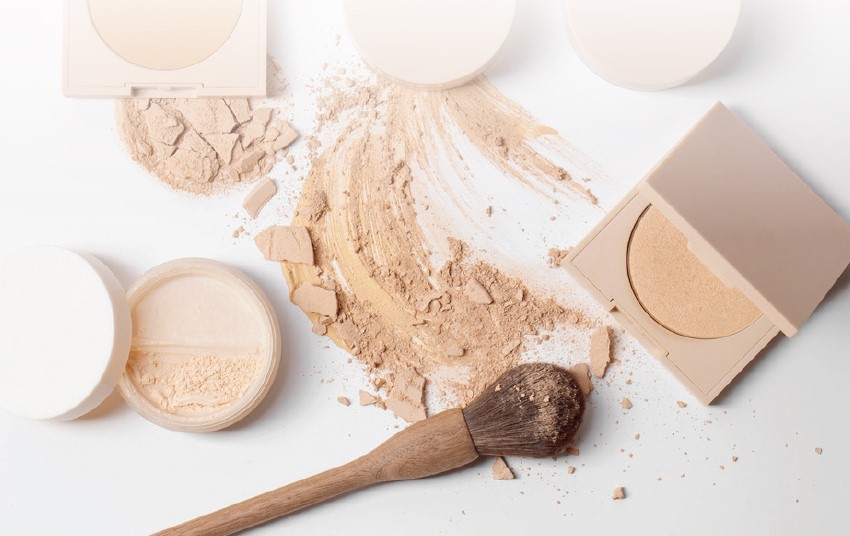Talc & Its Role in
Cosmetics & Personal Care Applications
Talc is one of the most key ingredients used in all the major formulas of color cosmetics & personal care products. It is the most softest rock available as per Moh’s scale. Talc is used as a filler & has a very integral role in majority of the beauty formulas.
Talc, or talcum, is a clay mineral, composed of hydrated magnesium silicate with the chemical formula Mg₃Si₄O₁₀(OH)₂. Talc in powdered form, often combined with corn starch, is used as baby powder. This mineral is used as a thickening agent and lubricant.
Talc has many uses in cosmetics and other personal care products. For example, it may be used to absorb moisture, to prevent caking, to make facial makeup opaque, or to improve the feel of a product. It serves as a lubricant and adds softness and shine to products.
This makes talc a common ingredient in cosmetics, food additives and industrial products.
Talc is considered a non-allergenic and non-irritant product that is considered an ideal choice for many physical applications. In the cosmetic industry, talc powder is highly preferred due to its antibacterial properties and, at the same time, also imparts a matte effect to the skin. Talc Powder is also an anticaking agent. Which helps in maintaining the consistency of the creams.
The manufacturing process includes crushing, drying and milling talc into a fine, soft, white powder.
Parameters for the right product;
1. Particle size,
2. Oil absorption capacity,
3. Dispersion shape,
4. Dispersive property,
5. Surface structure and size,
6. Chemical structure,
7. Surface hardness,
8. Purity,
9. Density.
The Physical properties of talc are:
• Platy, lamellar,
• Hydrophobic,
• Oleophilic (natural affinity with oils),
• Relatively inert.

Applications:
• Creams, lotions & gels,
• Decorative cosmetics/Make-up,
• Skin care (Facial care, Facial cleansing, Body
care, Baby care),
• Blushers,
• Foundations,
• Eye make up,
• Tablet coatings.
Alternative Products to Talc:
There has been some concerns throughout the years over its safety because of its potential to be tainted with asbestos, a toxic mineral, which causes cancer.
Although well analysed talc products do not cause such concerns, alternative fillers to talc can be used today.
Some of the alternative products to talc may be mica, the mix of mica and lauryl lysine or the mix of mica and magnesium myristate with a particle size of less than 10 microns.
 Author:
Jay Mehta - Manager-Sales & Marketing
Koel Colours
Translation and Compilation:
Zeynep Semiz - Commercial Manager
Color & More
Translation and Compilation:
Züleyha Dursun - Inside Sales Specialist
Color & More
Author:
Jay Mehta - Manager-Sales & Marketing
Koel Colours
Translation and Compilation:
Zeynep Semiz - Commercial Manager
Color & More
Translation and Compilation:
Züleyha Dursun - Inside Sales Specialist
Color & More

 Applications:
• Creams, lotions & gels,
• Decorative cosmetics/Make-up,
• Skin care (Facial care, Facial cleansing, Body
care, Baby care),
• Blushers,
• Foundations,
• Eye make up,
• Tablet coatings.
Alternative Products to Talc:
There has been some concerns throughout the years over its safety because of its potential to be tainted with asbestos, a toxic mineral, which causes cancer.
Although well analysed talc products do not cause such concerns, alternative fillers to talc can be used today.
Some of the alternative products to talc may be mica, the mix of mica and lauryl lysine or the mix of mica and magnesium myristate with a particle size of less than 10 microns.
Applications:
• Creams, lotions & gels,
• Decorative cosmetics/Make-up,
• Skin care (Facial care, Facial cleansing, Body
care, Baby care),
• Blushers,
• Foundations,
• Eye make up,
• Tablet coatings.
Alternative Products to Talc:
There has been some concerns throughout the years over its safety because of its potential to be tainted with asbestos, a toxic mineral, which causes cancer.
Although well analysed talc products do not cause such concerns, alternative fillers to talc can be used today.
Some of the alternative products to talc may be mica, the mix of mica and lauryl lysine or the mix of mica and magnesium myristate with a particle size of less than 10 microns.
 Author:
Jay Mehta - Manager-Sales & Marketing
Koel Colours
Translation and Compilation:
Zeynep Semiz - Commercial Manager
Color & More
Translation and Compilation:
Züleyha Dursun - Inside Sales Specialist
Color & More
Author:
Jay Mehta - Manager-Sales & Marketing
Koel Colours
Translation and Compilation:
Zeynep Semiz - Commercial Manager
Color & More
Translation and Compilation:
Züleyha Dursun - Inside Sales Specialist
Color & More